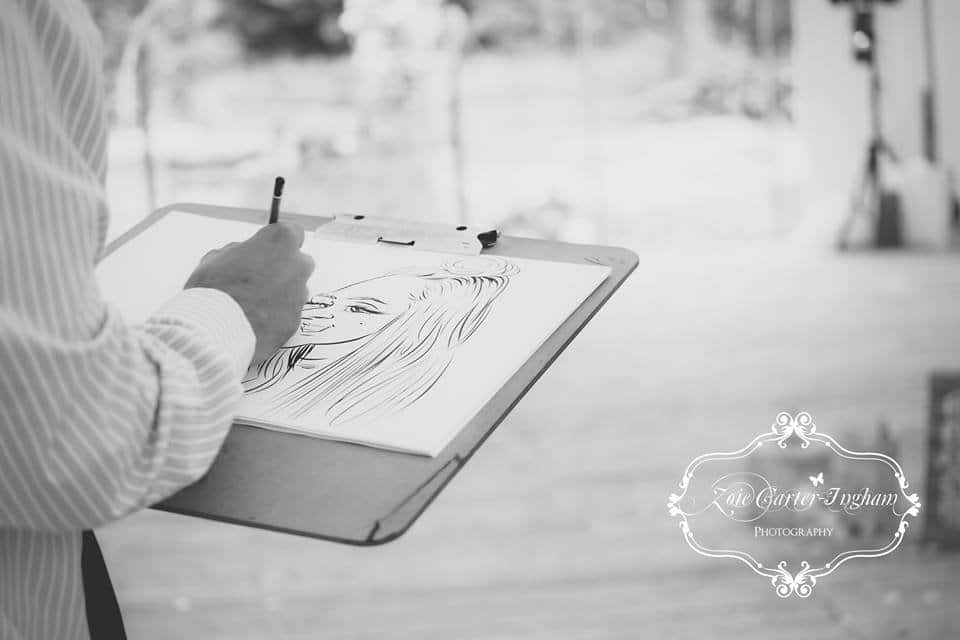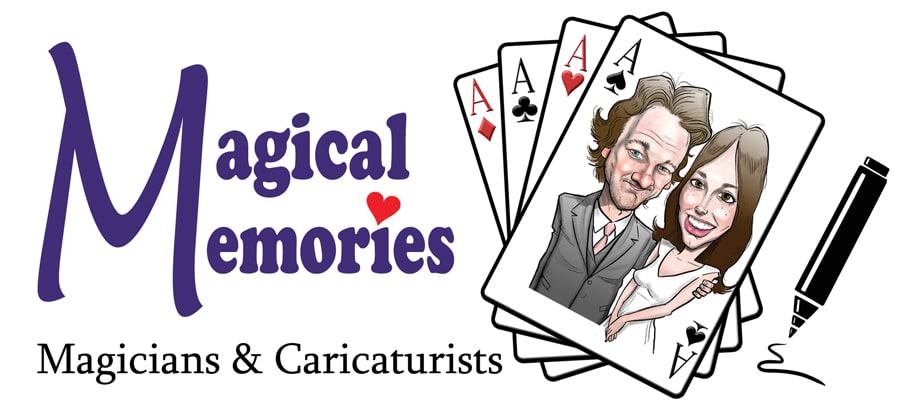
Caricature art, while universal in its basic concept of exaggerated portraiture, has evolved distinctly across different cultures and artistic traditions. These regional variations reflect not only artistic preferences but also cultural attitudes toward humor, satire, and personal representation. At Magical Memories, our diverse roster of international artists brings these varied traditions to events across the UK. This guide explores the fascinating world of global caricature styles and how they might enhance your next event.
The Evolution of Caricature Across Cultures
Historical Foundations
While modern caricature is often associated with entertainment, its roots across cultures reveal deeper purposes:
- European origins: Developed in 16th-century Italy (the word “caricature” derives from Italian “caricare” meaning “to load” or “exaggerate”)
- Asian traditions: Ancient Chinese and Japanese art forms incorporated exaggeration for both humor and moral commentary
- Middle Eastern heritage: Persian miniatures and Ottoman art included stylized, sometimes exaggerated portraiture
- African expressions: Traditional mask-making and sculpture employed exaggeration to represent character traits
- Pre-Columbian influences: Mesoamerican art featured stylized human representations with exaggerated features
Cultural Attitudes Toward Exaggeration
How different societies view the practice of caricature:
- Western perspectives: Generally embraces caricature as humorous entertainment and sometimes political commentary
- East Asian approaches: Often emphasizes cute or flattering exaggeration rather than mockery
- Middle Eastern traditions: Historically more cautious about personal representation, with focus on symbolic rather than individual exaggeration
- South Asian views: Rich tradition of stylized art that incorporates exaggeration while respecting religious and cultural sensitivities
- Latin American interpretations: Strong tradition of using exaggeration for social and political commentary
Major International Caricature Styles
American/Western Commercial Style
The style most familiar to UK audiences:
- Key characteristics: Prominent head on smaller body, exaggerated facial features, often includes props or themed elements
- Technical approach: Clean lines, bold colors, strong contrasts
- Famous practitioners: Al Hirschfeld, Jack Davis, Sebastian Kruger
- Modern applications: Theme parks, tourist attractions, corporate events
- Event suitability: Highly versatile for most Western events, especially casual celebrations
French Editorial Tradition
A sophisticated approach with historical depth:
- Key characteristics: Subtle exaggeration, emphasis on capturing essence rather than extreme distortion
- Technical approach: Refined linework, often monochromatic or limited palette
- Historical significance: Developed through publications like “Le Charivari” and artists like Honoré Daumier
- Modern applications: Literary events, cultural festivals, upscale gatherings
- Event suitability: Elegant weddings, cultural institutions, sophisticated corporate functions
Japanese Manga-Influenced Style
A contemporary approach with growing popularity:
- Key characteristics: Large eyes, simplified facial features, stylized body proportions, cute aesthetic
- Technical approach: Clean, precise lines, flat color areas, minimal shading
- Cultural origins: Evolved from manga and anime traditions
- Modern applications: Youth events, pop culture conventions, technology gatherings
- Event suitability: Teen parties, comic conventions, casual corporate events
Latin American Expressive Style
Bold, vibrant approach with emotional impact:
- Key characteristics: Dramatic exaggeration, vibrant colors, emotional expressiveness
- Technical approach: Bold strokes, strong contrasts, dynamic composition
- Cultural influences: Muralist traditions, folk art, political cartooning
- Modern applications: Festivals, community events, cultural celebrations
- Event suitability: Lively parties, cultural events, colorful celebrations
Eastern European Artistic Tradition
Sophisticated approach with fine art sensibilities:
- Key characteristics: Technically refined, psychologically insightful, often incorporating surreal elements
- Technical approach: Detailed rendering, masterful draftsmanship, subtle color work
- Historical context: Evolved from strong illustration and fine art traditions
- Modern applications: Art events, literary gatherings, upscale functions
- Event suitability: Gallery openings, literary festivals, sophisticated private events
Style Elements and Technical Approaches
Exaggeration Philosophy
How different traditions approach the fundamental aspect of caricature:
| Style Tradition | Exaggeration Approach | Focus Elements |
|---|---|---|
| American Commercial | Obvious, pronounced | Distinctive facial features |
| European Classical | Subtle, psychological | Character expression |
| East Asian | Stylized, often cute | Eyes, expression |
| Latin American | Bold, emotional | Expressive features |
| Middle Eastern | Symbolic, restrained | Symbolic attributes |
Line Quality and Technique
The distinctive mark-making approaches of different traditions:
- American style: Clean, confident lines with varying thickness
- French approach: Delicate, precise linework with subtle variations
- Japanese influence: Economical, precise lines with emphasis on contour
- Latin expression: Dynamic, energetic strokes with emotional quality
- Eastern European: Detailed, technically sophisticated rendering
Color Philosophy
How different traditions approach color in caricature:
- Western commercial: Bold, saturated colors with clear definition
- European traditional: Subtle, limited palettes with sophisticated relationships
- Manga-influenced: Flat, clean color areas with minimal gradation
- Latin American: Vibrant, expressive color with emotional impact
- Middle Eastern inspired: Rich, decorative color with pattern integration
Matching Styles to Event Types
Corporate Event Considerations
Style recommendations for business functions:
- Traditional corporate: Western commercial or European styles with moderate exaggeration
- Creative industry: More expressive styles like Latin American or contemporary approaches
- International business: Consider cultural backgrounds of attendees when selecting style
- Tech sector: Modern digital styles or manga-influenced approaches often resonate
- Financial/legal: More conservative European traditions with subtle exaggeration
Wedding Style Alignment
Matching caricature approach to wedding themes:
- Traditional formal: European classical style with elegant presentation
- Contemporary celebration: Modern Western style with clean, flattering approach
- Destination/themed: Style that complements cultural theme (e.g., Italian, Japanese)
- Multicultural: Artist versatile in styles relevant to both families’ backgrounds
- Festival/bohemian: Expressive, colorful approaches like Latin American tradition
Cultural Celebration Matching
Honoring heritage through appropriate style selection:
- Asian cultural events: Artists familiar with East Asian aesthetic traditions
- Latin American celebrations: Expressive, vibrant styles that reflect regional energy
- European heritage: Classical European approaches with historical awareness
- Middle Eastern gatherings: Artists sensitive to cultural considerations regarding representation
- Multicultural festivals: Versatile artists who can adapt to various cultural preferences
Digital vs. Traditional Across Cultural Styles
Traditional Media Variations
How traditional techniques manifest in different cultural approaches:
- Western traditional: Typically markers, pen and ink, or watercolor
- East Asian inspired: Often brush and ink with watercolor accents
- European classical: Pencil, charcoal, or limited palette media
- Latin American: Bold markers, vibrant pastels, or acrylic
- Middle Eastern influenced: Fine pens, detailed rendering, sometimes with decorative elements
Digital Adaptations
How cultural styles translate to digital platforms:
- American commercial: Adapts seamlessly to digital, often with enhanced color
- Manga-influenced: Naturally suited to digital creation with clean lines and flat colors
- European traditional: Digital brushes that simulate traditional media effects
- Expressive styles: Tablet pressure sensitivity captures dynamic line quality
- Global fusion: Digital platforms enable innovative blending of cultural styles
Cultural Sensitivity Considerations
Representation Awareness
Important considerations when working with diverse audiences:
- Facial feature sensitivity: Avoiding stereotypical exaggeration of ethnically distinctive features
- Religious considerations: Awareness of traditions regarding personal representation
- Cultural context: Understanding what might be considered respectful vs. offensive in different cultures
- Language elements: Careful inclusion of text or symbols from other languages
- Symbolic meaning: Awareness of colors, objects, or gestures with specific cultural significance
Appropriate Adaptation
Guidelines for respectful cross-cultural artistic practice:
- Informed approach: Artists educated about cultural traditions they reference
- Consultation: Seeking input from cultural representatives when appropriate
- Appreciation vs. appropriation: Honoring traditions rather than superficially copying
- Guest comfort: Prioritizing how the subject feels about their representation
- Contextual awareness: Understanding the specific event context and audience
Finding Artists with International Style Expertise
Portfolio Evaluation
What to look for when seeking specific cultural styles:
- Style versatility: Examples showing range across different approaches
- Cultural authenticity: Evidence of understanding traditional elements
- Technical proficiency: Mastery of techniques associated with the style
- Adaptation ability: Examples of customizing style to different subjects
- Cultural background: Artist’s own heritage or specialized training
Questions to Ask Artists
Important inquiries when seeking Caricaturists for Hire with specific cultural styles:
- “What is your experience with [specific cultural] caricature traditions?”
- “How did you develop your understanding of this particular style?”
- “Can you show examples of your work in this tradition?”
- “How do you adapt this style for contemporary event settings?”
- “What aspects of this tradition do you find most important to preserve?”
Case Studies: International Styles at UK Events
Japanese-Inspired Corporate Event
A technology company’s success story:
- Event theme: Product launch with Japanese partnership
- Style selected: Manga-influenced digital caricatures
- Implementation: Artist created stylized portraits incorporating product elements
- Cultural elements: Respectful incorporation of Japanese aesthetic principles
- Guest response: Particularly popular with younger attendees and international partners
- Result: “The artwork perfectly bridged our corporate identity with our new market focus”
Latin American Wedding Celebration
A cross-cultural wedding success:
- Event context: British-Colombian wedding celebration
- Style selected: Vibrant Latin American-inspired approach
- Implementation: Colorful, expressive caricatures incorporating elements from both cultures
- Cultural elements: Bright colors and expressive features while maintaining wedding elegance
- Guest response: Appreciated by both families as honoring the bride’s heritage
- Result: “The caricatures became a talking point that brought our families together”
Fusion and Contemporary Approaches
Global Style Blending
The evolution of cross-cultural caricature:
- East-West fusion: Combining manga influences with Western commercial approaches
- Traditional-digital hybrids: Traditional cultural styles executed with digital technology
- Multi-cultural references: Incorporating elements from multiple traditions
- Contemporary global style: Internationally influenced approach transcending specific traditions
- Personalized cultural adaptation: Tailoring style elements to subject’s background
Innovation in Cultural Expression
Forward-looking approaches to cultural caricature:
- Augmented reality integration: Digital cultural styles with interactive elements
- Animation adaptations: Traditional styles enhanced with simple movement
- Collaborative approaches: Artists from different traditions working together
- Subject-directed fusion: Involving subjects in selecting cultural elements
- Educational components: Incorporating information about artistic traditions
Questions to Ask When Booking International Styles
Use this checklist when discussing culturally-specific caricature options:
- “What experience do you have with this particular cultural style?”
- “How do you ensure cultural sensitivity while maintaining artistic expression?”
- “Can you adapt this style to suit our specific event context?”
- “Do you have examples of this style created at similar events?”
- “What aspects of this tradition do guests typically find most engaging?”
- “How do you handle requests for fusion or mixed cultural styles?”
- “What materials or setup do you need for this particular approach?”
- “Are there any cultural considerations we should be aware of for our event?”
- “How do you approach subjects who may be unfamiliar with this artistic tradition?”
- “Can you provide any background information about this style for our guests?”
Conclusion
The rich diversity of international caricature styles offers event planners a wonderful opportunity to create unique, culturally resonant experiences for their guests. Whether honoring heritage, complementing an event theme, or simply offering something distinctive, these varied artistic traditions can add depth and meaning to your entertainment.
At Magical Memories, our roster includes artists trained in multiple cultural traditions, from Western commercial styles to East Asian approaches, European classical techniques to Latin American expressiveness. We can help you select the perfect stylistic match for your event context, ensuring that the caricature entertainment not only delights your guests but also appropriately reflects the cultural sensitivities and preferences of your audience. Contact us today to explore how international caricature styles can enhance your next event.
